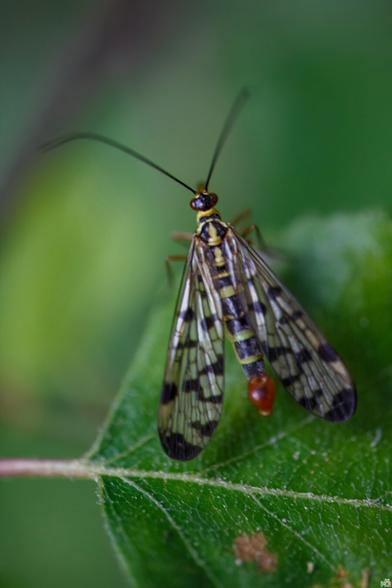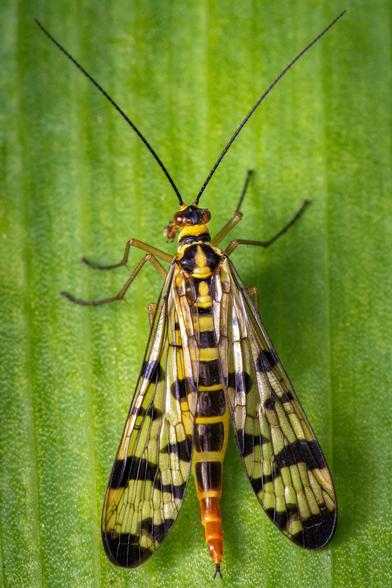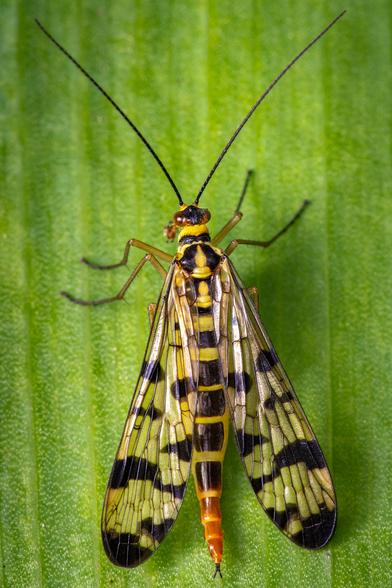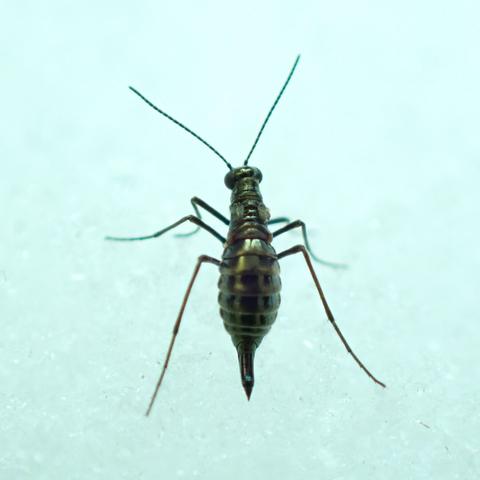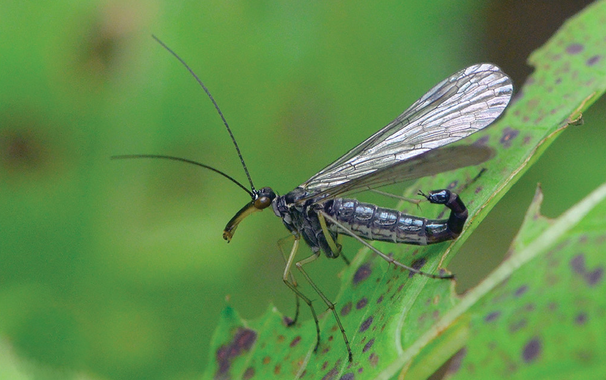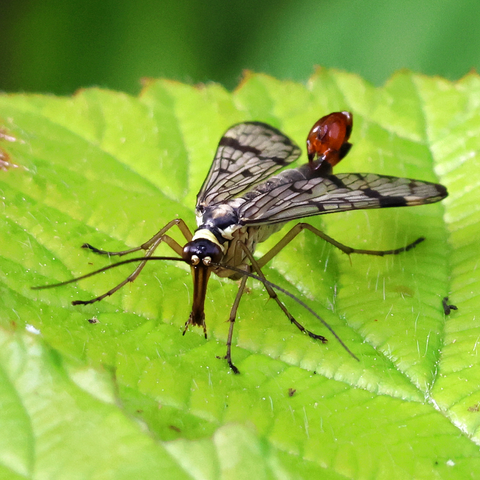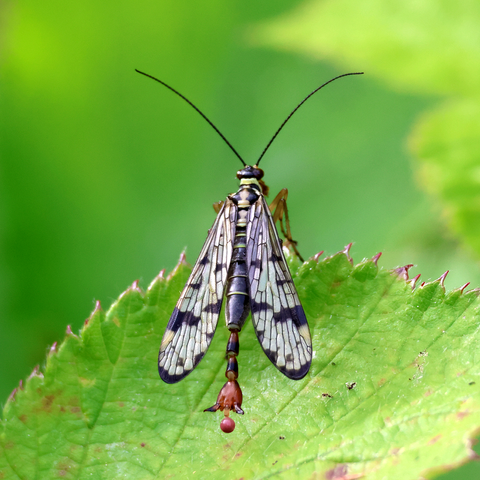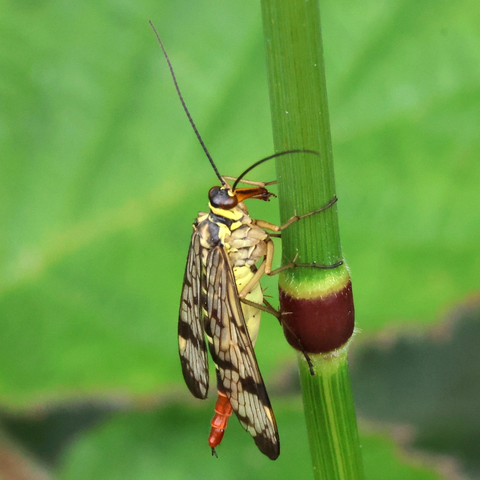While exploring the Kampina nature reserve near Oisterwijk, I encountered the fascinating Common Scorpionfly (Panorpa communis), or "beenschorpioenvlieg" in Dutch. Drawn by its distinctive patterned wings and the male's curved, red-tipped abdomen—resembling a scorpion's tail—I was compelled to capture its unique features. Utilizing my Canon 5D Mark III with the Canon MP-E 65mm 5x macro lens, I managed to photograph this elusive insect, despite its tendency to fly off before I could get close.
Scorpionflies are harmless insects belonging to the ancient order Mecoptera, dating back over 250 million years. The male's "tail" is actually a pair of claspers used during mating, not a stinger. These insects are scavengers, feeding on dead insects and sometimes stealing prey from spider webs. Their mating rituals are particularly intriguing; males present females with nuptial gifts, such as dead insects or saliva masses, to increase mating success.
Capturing this image was a rewarding challenge, highlighting the intricate beauty of this often-overlooked insect.
#PanorpaCommunis #Scorpionfly #Beenschorpioenvlieg #MacroPhotography #Canon5DMarkIII #CanonMPE65mm #Kampina #Oisterwijk #NoordBrabant #NetherlandsNature #InsectPhotography #WildlifePhotography #Mecoptera #NatureLovers #Entomology #MacroWorld #InsectMacro #FieldPhotography #NatureExploration #Biodiversity
